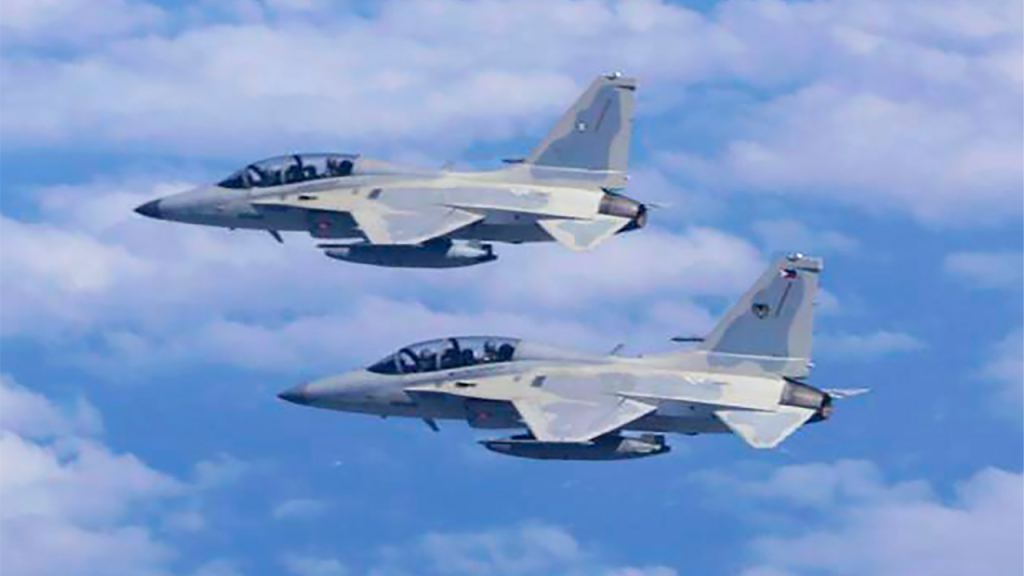A Philippine air force FA-50 fighter jet has gone missing during a nighttime combat mission in southern Philippines while supporting ground forces engaged in combat against insurgents. Communication with the aircraft was lost around midnight on Monday before it reached a designated target area. A search operation is currently underway, as officials express hope for a swift recovery of both the aircraft and its pilots.
| Article Subheadings |
|---|
| 1) Details of the Incident |
| 2) The Mission’s Context |
| 3) Reactions from Officials |
| 4) The Fighter Jet Fleet Overview |
| 5) Implications of the Incident |
Details of the Incident
The missing FA-50 fighter jet was part of a tactical mission and lost contact shortly after midnight on Monday. Officials have confirmed that the aircraft was supporting ground operations engaged in an anti-insurgency campaign in the southern region of the country, which is currently witnessing increased activity from various insurgent groups. As communication went silent, air force personnel quickly mobilized search efforts to locate the aircraft as well as its pilots, who have not been accounted for since the communication loss. Currently, the search effort is considered a top priority for the Philippine military, highlighting the urgency and significance of the situation.
The Mission’s Context
The mission during which the FA-50 went missing was part of a broader anti-insurgency operation aimed at containing groups of communist guerrillas who have remained active in certain regions of the Philippines. These groups have resorted to guerrilla warfare tactics, complicating efforts by the military to ensure peace and order in areas prone to violence. The FA-50 aircraft play an essential role in providing close air support to ground troops, significantly enhancing their operational capabilities. While these missions are crucial for maintaining national security, they also carry inherent risks, particularly under challenging operational conditions such as nighttime engagements.
Reactions from Officials
When news broke about the missing jet, several military officials expressed their concern regarding the situation.
“We are hopeful of locating them and the aircraft soon and ask you to join us in prayer during this critical time,”
stated Col. Ma. Consuelo Castillo, a spokesperson for the Philippine air force. The statement reflects the somber mood within the military community as they tirelessly work to return the missing personnel and aircraft home. The incident has also drawn attention from various groups monitoring the Philippine government’s operations against insurgents, emphasizing the risks that armed forces face in their ongoing battles.
The Fighter Jet Fleet Overview
The Philippine Air Force acquired a total of 12 FA-50 fighter jets from South Korea’s Korea Aerospace Industries Ltd. starting in 2015, at a cost of approximately 18.9 billion pesos (or around $331 million). This procurement was a significant undertaking under the Philippine military modernization program, which has faced prolonged delays largely attributed to funding issues. The FA-50 jets are multifunctional and designed to be versatile, facilitating operations that range from aerial intercession to air policing, as well as strong ground support during engagements. Despite the modern battlefield tactics, such aircraft can still encounter vulnerabilities during high-risk missions, like the one currently in question.
Implications of the Incident
The disappearance of the FA-50 aircraft not only raises immediate concerns for the safety of the pilots and crew members but also has broader implications for the Philippine military’s operational readiness. If the search for the missing jet proves unsuccessful, it will necessitate a review of protocols employed during night operations and potentially lead to deeper scrutiny regarding operational risks versus mission objectives. Additionally, the incident could influence public perception about the adequacy of military equipment and tactics in confronting insurgent threats. As a continuous conflict afflicts the nation, maintaining trust in military capabilities becomes vital, and any mishap could impact that confidence significantly. The fate of the aircraft and personnel is crucial for all involved parties and requires ongoing attention from military leaders and government officials alike.
| No. | Key Points |
|---|---|
| 1 | A Philippine FA-50 fighter jet went missing during a combat mission against insurgents. |
| 2 | The aircraft lost communication shortly after midnight on Monday. |
| 3 | Search operations have been initiated to recover the jet and its pilots. |
| 4 | The jet was part of an anti-insurgency effort focused on combating communist guerrillas. |
| 5 | The FA-50 aircraft were previously acquired to strengthen the Philippine military’s capabilities. |
Summary
The disappearance of a Philippine FA-50 fighter jet during a nighttime combat operation represents a significant event for the Philippine military. The incident underscores the challenges faced by the armed forces in combating insurgent threats while ensuring the safety of their personnel. As search operations proceed, the implications of this event could resonate through military strategy and public perception of the current operational effectiveness. The hope remains that, through these efforts, both the aircraft and its pilots will be found safe.
Frequently Asked Questions
Question: What is the FA-50 fighter jet used for?
The FA-50 fighter jet is utilized by the Philippine Air Force for various missions, including aerial support for ground troops, air policing, and patrolling disputed territories.
Question: What is the significance of the ongoing anti-insurgency operations in the Philippines?
The anti-insurgency operations are crucial for maintaining peace and security in regions affected by guerrilla warfare, which aims to undermine public safety and government authority.
Question: How has the acquisition of FA-50 jets impacted the Philippine military?
The acquisition of FA-50 jets has been a pivotal part of military modernization, enhancing the operational capabilities of the Philippine Air Force significantly in addressing both internal and external threats.


